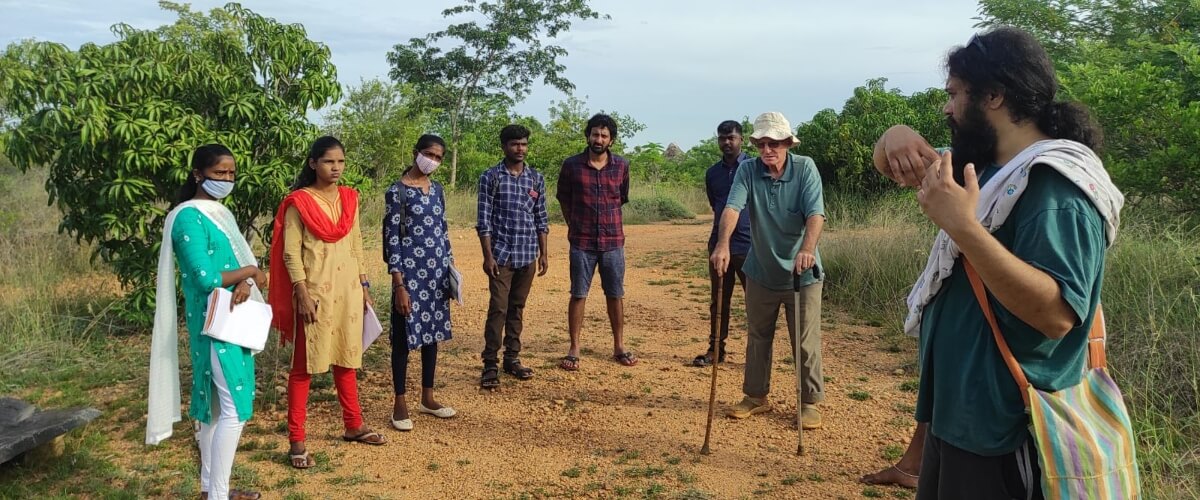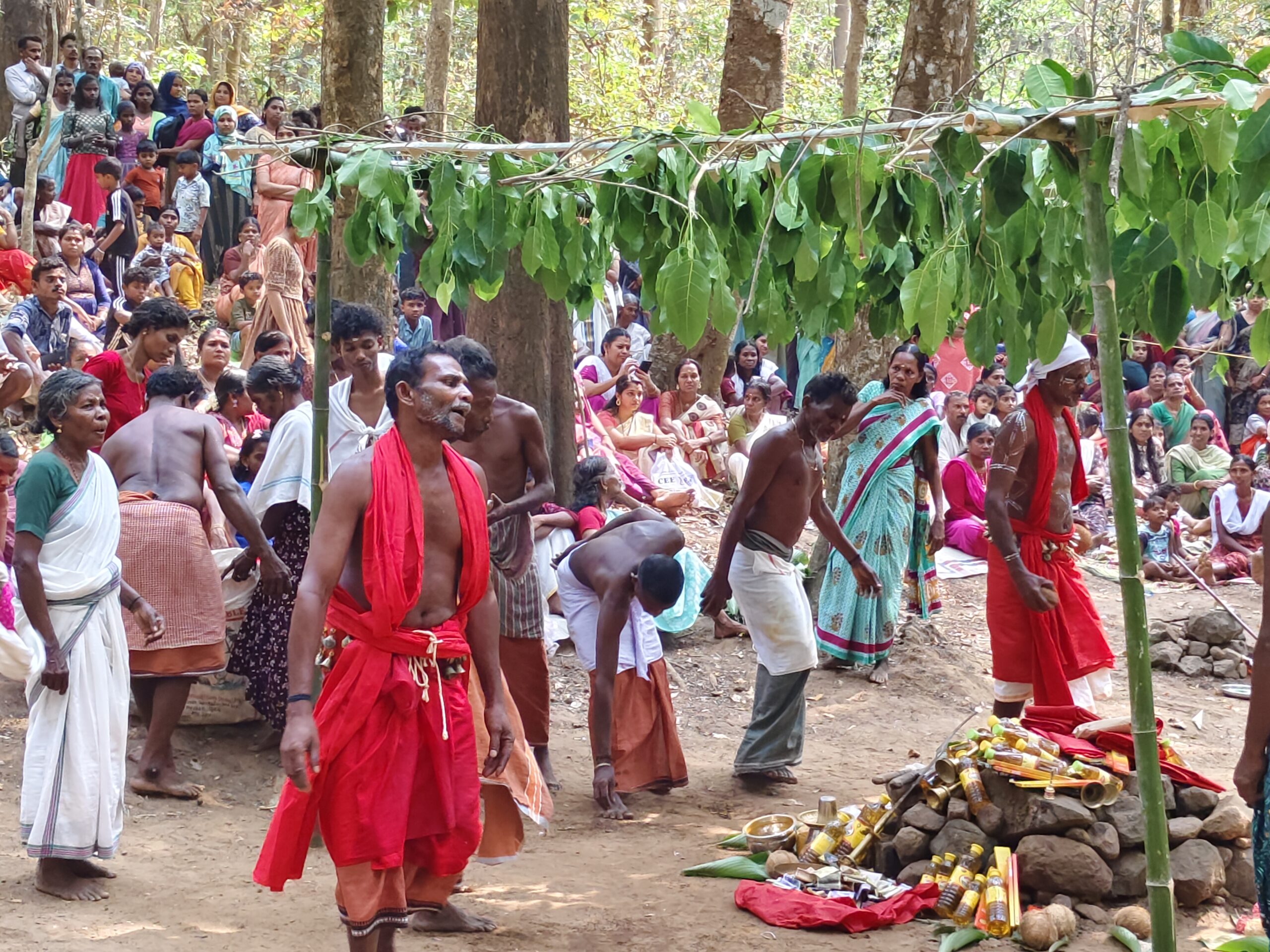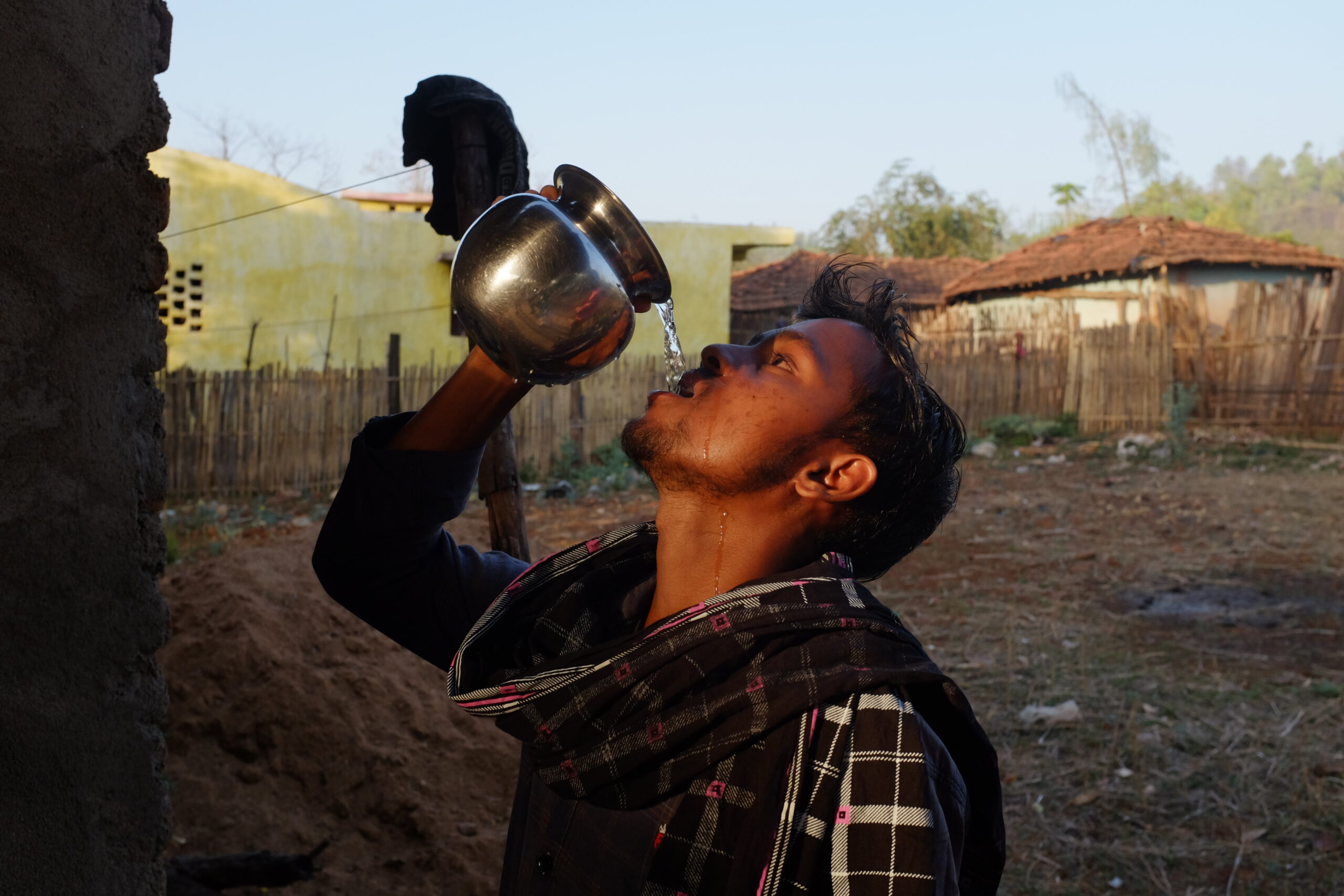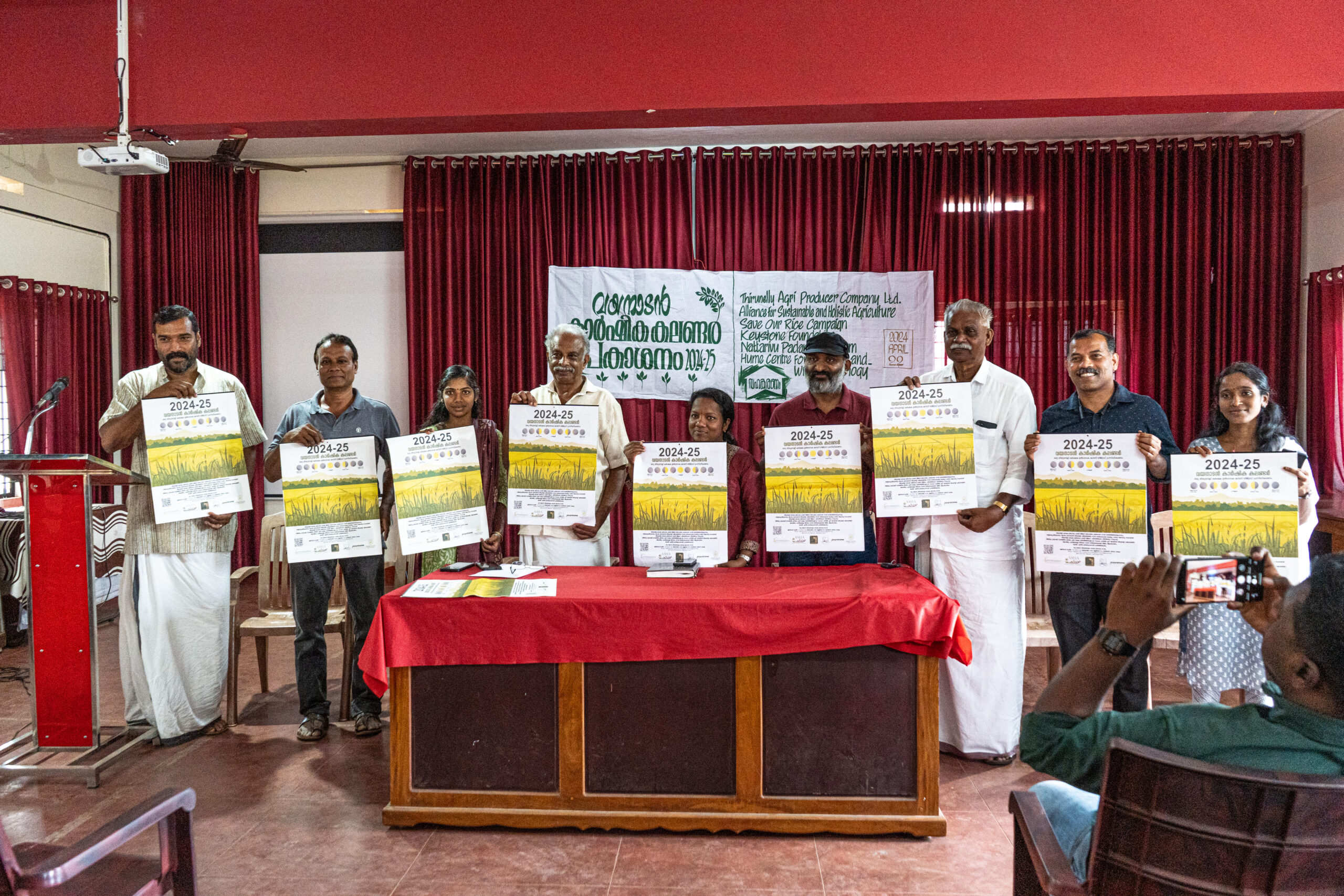Community Stewards have always been a part of our implementation in our projects. Through this, we envisage developing local capacities to manage and conserve local resources in their own respective villages. Last month, to build our stewards capacity on watershed systems and their connection to ecological restoration – a four-day exposure visit to Auroville, Pondichery was planned with 9 stewards across three working regions – Kotagiri, Kokkalthorai and Aracode.
On the first day, we were welcomed with a presentation by Joss where he gave a detailed introduction to the history of Auroville and how later on Pitchandikulam started within the bio region. The presentation was interesting as he related his own journey from England to Australia and other parts of the world before he finally landed in Aruroville in Pondicherry. He went on to explain how the region was when he first landed in Pondicherry.
The initial days in the region gave them time to understand the land use in the region prior to agriculture and development. They built small thatched huts for themselves with the help of local communities and using local materials. The initial days in their region were a learning process, they had collected and documented stories about the landscape from the local communities.
In order to identify local flora, they collected seeds from the local sacred groves/temple forests to find out the local species and used these species to plant forests in Auroville/Pitchadikulam. His story set the context of what our stewards were going to learn and witness during their trip.
There was also a tour of the Auroville museum by Gopi Anna, in the tour he told us about the history of the area from the Megalithic era to the current times, he showcased us several artifacts that were dug up from the region which included evidence of civilization in the area. Some of the artifacts collected are directly linked to the water pumping, collection, and storage practices from the region.
And towards the afternoon – Niketana where she explained about the ‘Citizen’s Assembly’ and how they formulated a water vision for Auroville. The interesting part about the talk is how she explained how the members of the citizen’s assembly were formed and how the members were chosen. She also explained that there are several such initiatives in several cities in the world as well as some cities in India.
Day 2 – Witnessing Water systems management in Auroville
The second day started with a tour of the bioregion and the Kaluveli watershed, the intention was to understand the water management systems in the Area. At first, we visited the Irumbai lake (aeri) which was near the Auroville Campus, there we witnessed the Pisciculture by a few members from the locality. They told us that this was a man-made lake built during the reign of the Cholas, how it was used to manage water for agriculture through canals.
The stewards were asked to locate themselves on the Kaluveli watershed map that was provided to them. A small discussion on how to read the maps and orient the map was explained to them following how the layers were created and digitized by the Pitchandikulam team. It was interesting how each aeri was built in a way that the excess water overflows from one lake to another either through natural drainage or manmade drainage channels.

Right after this, they visited two other lakes Kilanur Chinnaaeri and Kilanur Periyaaeri –believed to be an ancient water management system through which water flowed from one lake to another through an underground tunnel system. All these stories that they shared with us were fascinating to our stewards, but the next one would always be better than the previous.
As we moved on our guide explained to us when we passed by a local temple about how these systems help maintain the water level of the surrounding water bodies and wells are relatively the same because of the interconnections with the local aquifers.
Post lunch we visited a beach and an estuary where rivers emptied into the ocean, the beach was near the Historic Alamparai fort which was built during the Mughal Era under the Nawab of Arcot. The team got to experience the boat ride from the estuary to a nearby Kalpaakkam beach.
Final Two days…

We started our day with a session with Joss explaining to our team about the work in Nadukuppam (a village located an hour away from Auroville) where they started planting a forest about 10 years back. Inside the forest, exists a series of ponds that were constructed in order to conserve water and aid in groundwater recharge.
These ponds are interconnected with each other; joss explained to us that these ponds were built with keeping in mind the topography of the land. He said that before building these ponds they observed the flowing water in the land they built these ponds keeping in mind the flow of water for water management purposes, they had also constructed a floating wetland recently in these ponds in order to purify the water and create habitats for birds visiting the region.
Here, our stewards also got a chance to visit the local school, were children learn about these sustainable systems through nature education and other forms of informal learning, besides going to school. They also showed us a wastewater management system that was put in place which treats toilet water into greywater which is used to irrigate the surrounding plants. We felt that this was something that we could be implemented in a school in the Nilgris.
Post lunch we had a knowledge sharing session with the teachers in the school through which we showed them how to use the Jal Tara water testing kit. They conveyed to us that they found the session very helpful as they feel confident that they can now test the water themselves instead of sending it to labs.

On the final day, along with some locals and the teachers from the Nadukuppam School, we designed a water-security plan and guided them how to formulate one for their village. We also shared with them a book guide that Keystone had developed to share with communities.
By Gokul Halan

















